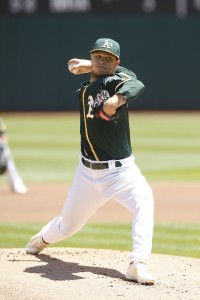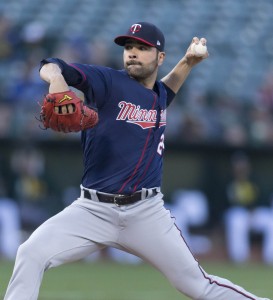The Cardinals “float[ed]” a trade proposal for Sonny Gray before the Athletics shipped him to the Yankees, according to MLB Network’s Ken Rosenthal. In concept, at least, St. Louis would have considered sending young outfielder Stephen Piscotty to Oakland along with a promising starter (Luke Weaver or Jack Flaherty), though it seems talks never got going. Derrick Goold of the St. Louis Post-Dispatch looks closer at the Cards’ lack of action on deadline day. Top baseball decisionmaker John Mozeliak acknowledged “a level of frustration” that nothing got done, though he also said the team wasn’t inclined to make deals just for the sake of action. Ultimately, momentum never built toward a deal for Lance Lynn, and the club’s other chatter never materialized into a trade. You’ll want to peruse the lengthy column for all the details.
Here are some more post-deadline links of note:
- The Dodgers’ acquisition of Yu Darvish came together quite late, as Jeff Passan of Yahoo Sports explains in fascinating detail. It became apparent the Dodgers wouldn’t get Zach Britton from the Orioles within a half hour of the deadline, but the team had already “abandoned hope” of landing Darvish. The Rangers, meanwhile, had run through their alternative trade partners for the ace righty and found none availing. The paths of the two organizations converged just twenty minutes before the deadline. You’ll certainly want to give the story a full read; Texas fans will also want to check out this piece from Evan Grant of the Dallas Morning News on the team’s unannounced but still-evident rebuilding path.
- In the end, there just wasn’t that much demand in the marketplace for Darvish, Rosenthal also notes — so much so that the Dodgers were nearly in position to land both Darvish from the Rangers and lefty Zach Britton from the Orioles. That said, there was “some overlap” between the prospects in both potential deals, and it obviously would’ve required a steep overall price to get both arms. Instead, Los Angeles added two different lefties, Tony Watson and Tony Cingrani.
- As regards Britton, Rosenthal had some stern words for how things played out. The Orioles spurned not only the Dodgers but likely also the Astros. For Baltimore, the deadline approach “was disturbingly short-sighted,” by Rosenthal’s reckoning. And when Houston wasn’t able to find another top-end arm, says Rosenthal, its body of deadline work became a “lost opportunity.” It does seem worth bearing in mind, particularly regarding the Astros, that the August trade period appears to be full of opportunities for making further moves if the need is there.
- Over in Toronto, the Blue Jays ended up holding onto righty Marco Estrada and then watched him turn in a strong outing last night. As Shi Davidi of Sportsnet.ca writes, Jays GM Ross Atkins suggested yesterday that the organization may yet see Estrada as a part of the team’s future — though his contract is up at year’s end and he perhaps remains a plausible August trade piece. With Estrada remaining in Toronto through the deadline, said Atkins, “we’ll start thinking about not only how he impacts us now, but how he can potentially impact us beyond 2017.”
- Be sure also to check out the trade deadline rundown from Sportsnet’s Ben Nicholson-Smith, who assesses some winners and losers from the day’s action. ESPN.com’s Buster Olney also issued deadline grades in an Insider piece.
- With the Braves holding on deadline day, MLB.com’s Mark Bowman takes stock of the months to come. Second baseman Brandon Phillips, reliever Jim Johnson, and starter R.A. Dickey could all be possible August trade chips, he notes, while the inclination of the organization remains to consider deals involving first baseman Matt Adams over the offseason. Meanwhile, Atlanta continues its long-standing pursuit of controllable pitching, though that’ll surely await the end of the current season.


